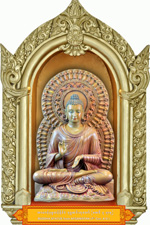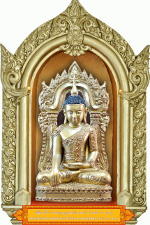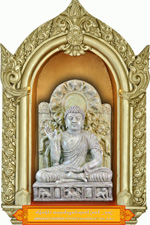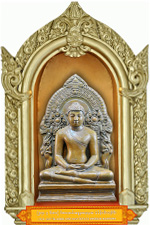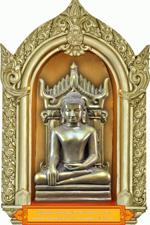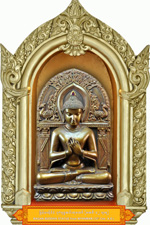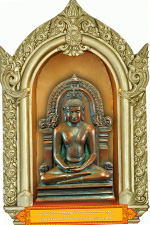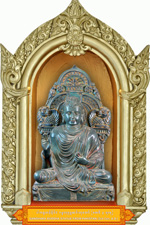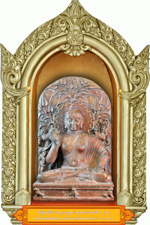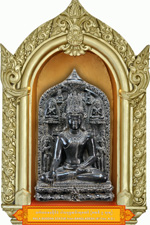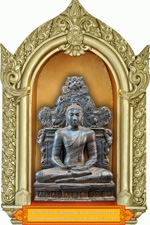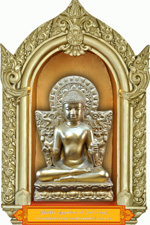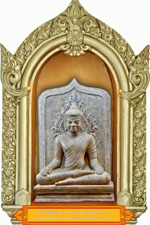The Gallery of Buddhas
In the interior walls of the Sitagu Shwe Zi Gon Pagoda are a main statue and on each wall niches in which altogether 28 Buddha statues are sanctified, each carrying a name within the lineage of Buddhas beginning with Dipinkara and ending with Sakyamuni. Twenty-four of these are placed on the south, west and north walls. The main statue, five-feet high and carved out of pure white marble, is positioned on the east wall and flanked on one side by Kakusandha Buddha and Konagamana Buddha and on the other by Kassapa Buddha and Gotama Buddha, completing the set of 28 small Buddha statues with the four Buddhas enlightened in the present Bhadda eon. The marble statue and lacquer statues on the east wall were brought from Burma, but the remaining 24 statues, each two feet high, were carefully hand-crafted at the Sitagu Vihara under the close supervision of Burmese Traditional Architect Tampawaddy U Win Maung and his team.

Scultpure and Sculptor
The 24 different statues of Buddha also represent the different countries and different eras in which Buddhism has taken root and flourished. The earliest statue dates back to the 1st century B.C. Mathura civilization in the Northern India and the latest Padumacivara statue to the 18th century A.D. Amarapura civilization in Burma – literally spanning over 2,000 years of civilization encompassing India, Sri Lanka, Nepal, Tibet, Afghanistan, Pakistan, Bangladesh, China, Korea, Japan, Burma, Thailand, Cambodia, Laos, Indonesia and Vietnam. No statue is like any other and each embodies its respective era. The entire collection of these rare statues can all be admired in one place, making Sitagu Vihara effectively a museum of ancient Buddhist civilization.
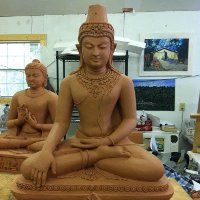
In Progress
Before the most ancient Mathura statue, including the period from the time of the Buddha's (Sixth Century BC) to the time of Asoka (Second Century BC) there were no statues of the Buddha. Instead, the images of lotus, bodhi tree, Dhamma Wheel, and stupa, representing the four great events of the Buddha's life, were as prominent and commanding as statuary in contemporaneous traditions such as those of the Romans and Greeks, the Hindus and the Jains. These ancient Mathura statues were excavated from the Kitra site and are displayed in the Mathura Archeological Museum in India. The statue also elaborates the other detailed artwork depicting the lion-guarded throne flanked by two bodhisattas, Arimettaya and Avalokitesvara, with a bodhi tree backdrop
Click on an image below for a larger view.



